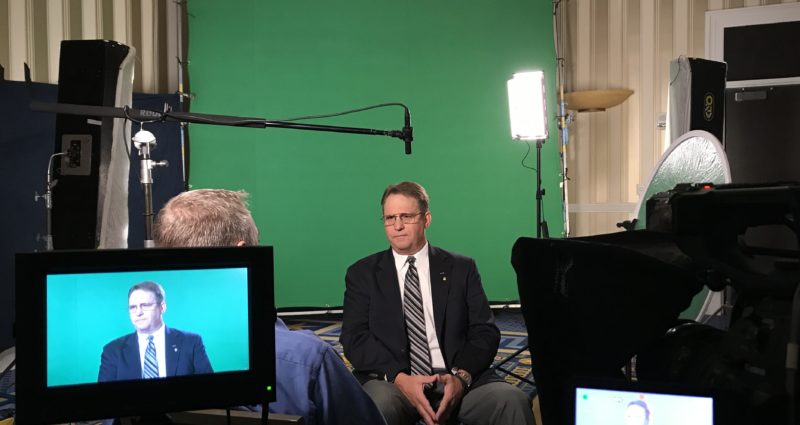
BEST GREEN SCREEN VIDEO GIVES YOU A LARGE AMOUNT OF VARIETY
Setting props and editing image assets in a video assumes that your setting will be entirely digital. The best green screen video has been used in almost every level of production, from multi-million dollar blockbusters to kids at home with chroma-key green paint and the possibilities are only limited by your rendering ability. Of course, no matter how good your computer generated graphics, are, the entire video won’t look right if you don’t light it correctly.
This is one of the many reasons companies looking for promotional or training videos seek professional corporate videographers do the shooting for them. Whether you’re shooting a fake news show in your garage or are the best video production company in Washington DC, the best lighting practices for green screen shooting are universal. Wondering how it works? Here are four major green screen lighting pointers:
Smooth the Screen
While the best green screen video may be magic, they are still challenging to get correct. Even a single wrinkle in your green screen can change the shading on the screen in a small area and wreak havoc with the chroma key effects when editing later on. Fortunately for teams struggling with their green screen flatness, this is a problem that has occurred many times before and other teams like you have found some answers.
If you can, try to pull your screen tight over a frame to deny it the opportunity to wrinkle. If it has to hang somewhat loose, try the spray bottle trick. Damp the entire screen with the spray bottle and wait for gravity to do its thing. While your screen may not be usable immediately after spraying, you will see great results the next day.
Light for the Digital Setting
When deciding how to light your subject, remember that they will not appear to be in your studio in the final work. They should be, to the best of your ability, shining with the light of their green-screen rendered surroundings, which means the color, intensity, and angle need to approximately match.
If you are going to use a balmy tropical setting, for instance, you want your subject lit with a more yellow light, as it wouldn’t make sense in that circumstance for them to be shining blue from indoor halogens. For the same reason, you want to turn down and blue the lights if their scene is in a fantasy evening adventure.
Light Subject and Screen Separately
The best green screen video needs to be evenly lit in order to do its job, while your subject needs to be specifically lit in order to match the potential digital setting. In order to accommodate this double requirement, set the subject far enough away from the screen so that you can light them separately while also filling your field of view with green screen.
Cool and Warm Lights
Once you’re lighting the subject and background separately, you can begin to optimize for both sets of lighting. The green, for instance, can be made to pop out and fulfil its purpose more effectively if lit with bright colors at cool blue-range temperatures.
Subjects, on the other hand, are much more often depicted as standing in sunlight or warm older style yellow lights. To a certain extent, yellow lights tend to make living people stand out better for similar reasons why cool lights look good on blue. It is simply complementary.
If your business has been considering incorporating the best green screen video into a marketing plan or even just for more dynamic training videos, finding the right service can be helped if you understand some of the process.
For anyone in the DC, Virginia, or Maryland regions looking for professional corporate videographers, Foundation Digital Media is proud to offer green screen video services to the entire DC surrounding area. For more information about DC green screen video or to schedule a consultation, contact us today!




